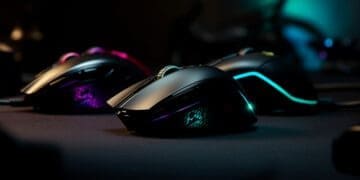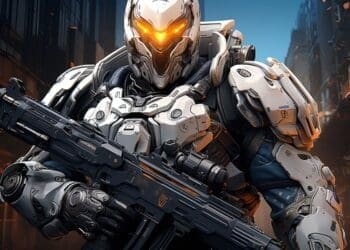MOBA games have grown from a simple Warcraft III mod into one of gaming’s most influential genres. These games now attract hundreds of millions of players worldwide. The multiplayer online battle arena genre’s progress from custom maps to sophisticated competitive platforms has revolutionized esports.
Battle arena games operate on a straightforward concept – two teams of five players compete to destroy each other’s base. The depth and strategy behind this simple premise have created some of gaming’s most enduring titles. League of Legends and Mobile Legends have fundamentally changed how players approach competitive gaming.
This piece will explore 10 classic MOBA games that have defined and revolutionized the genre. Each game’s unique features, contributions to the format, and ability to engage players years after release will be examined thoroughly.
Understanding MOBA Fundamentals
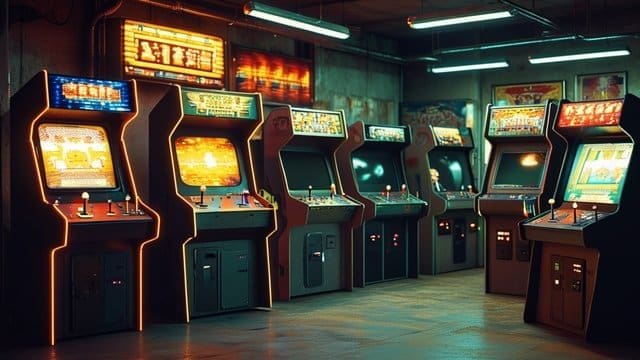
The world of multiplayer online battle arena games has some fascinating mechanics. These games blend strategy, teamwork, and skill that millions of players worldwide find engaging.
Core Gameplay Elements
A MOBA match puts two teams of five players against each other on a predefined battlefield. Players don’t just run around shooting – each one controls a powerful character with unique abilities that become stronger throughout the match. The main goal? Players must destroy the opponent’s main structure while defending their own.
These games combine real-time strategy, role-playing, and action elements brilliantly. Each match gives players a fresh start. Teams work together to break through defensive structures and defeat waves of computer-controlled minions that march along set paths.
Role-based Team Composition
Team composition makes or breaks MOBA games. Players typically choose from these core roles:
- Tanks – High health and armor, acting as team shields
- Damage Dealers – Primary source of offensive power
- Support – Improve team capabilities and provide utility
- Junglers – Roam between lanes and secure objectives
Heroes have intentional limitations – no single character can win alone. This creates a dynamic environment where teamwork becomes vital to victory.
Strategic Map Control
MOBA battlefields feature three main lanes: top, middle, and bottom. The “jungle” lies between these lanes – a dangerous area with neutral monsters that offer various benefits when defeated.
Map control plays a vital role in resource gathering and objective control. Heroes gain experience points and gold from securing kills near enemy units. This economic edge helps teams level up faster and buy items that strengthen their characters, creating a snowball effect toward victory.
Strategic depth comes from juggling multiple objectives: defending structures, controlling resource points, and coordinating team movements. Teams adapt their strategies on the fly and make quick decisions about pushing objectives or protecting their territory.
Heroes of the Storm’s Unique Approach

Heroes of the Storm takes a bold new direction with the MOBA genre. The game breaks away from traditional conventions and showcases Blizzard’s innovative vision. They’ve made the genre more available while keeping its strategic depth intact.
Simpler Resource Management
The game completely reimagines how heroes become stronger. Heroes of the Storm removes individual gold farming and item shops. Players experience a shared team experience system that lets everyone level up together. Teams work better together because players don’t compete with teammates for resources.
A talent system replaces traditional item builds, with power spikes at levels 10 and 20. The sort of thing I love about this system is how it keeps strategic depth while removing complex item management.
Objective-focused Gameplay
Map objectives directly influence victory conditions in Heroes of the Storm. Each battleground offers unique challenges and secondary objectives that can turn the tide of battle. These objectives help create comebacks and make matches more dynamic.
Teams must make strategic choices constantly. Players often decide between pursuing map objectives or taking other opportunities, since giving up an objective can sometimes lead to bigger advantages.
Cross-franchise Appeal
The game’s diverse roster draws from Blizzard’s rich universe of characters remarkably. Here’s how the heroes break down:
- Warcraft: 69 heroes
- Diablo: 48 heroes
- Starcraft: 39 heroes
- Overwatch: 16 heroes
- Classics: 5 heroes
This cross-franchise integration creates a unique playground where favorite characters from different universes clash and cooperate. The game feels like Blizzard’s take on Super Smash Bros in MOBA format.
The game’s steadfast dedication to making MOBAs more approachable sets it apart without sacrificing strategic depth. Matches are designed to be quick and average around 20 minutes. Players get all the excitement of traditional MOBAs in a more concentrated experience.
SMITE’s Third-Person Innovation
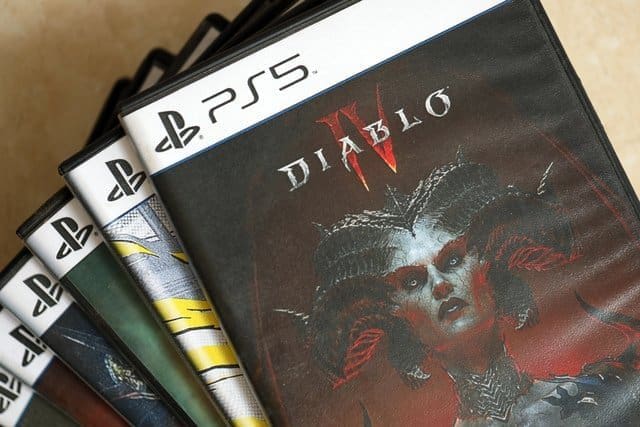
SMITE stands out in the changing world of multiplayer online battle arena games with its groundbreaking approach to view. This unique battle arena game has altered the map of what a MOBA can be.
Perspective Change Effect
Traditional MOBAs use a top-down view, but SMITE offers something completely different. The game’s third-person perspective puts players right behind their character. Players see a more immersive view of the battlefield. This change in view isn’t just for looks – it changes how players connect with the game. Action game and shooter fans will find it more available.
The viewpoint affects tactical decisions in fascinating ways. Players make choices based on what they see directly ahead instead of having a complete battlefield overview. This creates a more intense and personal combat experience.
Mythological Theme Integration
SMITE’s deep connection to global mythology makes it captivating. Players don’t just control generic characters – they become legendary deities from world cultures. The game’s diverse roster of mythological figures has drawn over 40 million players. These include:
- Greek and Norse pantheons
- Egyptian and Hindu deities
- Chinese and Japanese immortals
- Various other cultural mythologies
Each god’s legendary powers come alive in the game. Players can throw lightning bolts as Zeus or command death as Anubis. Ancient stories blend with modern gameplay to add depth to every match.
Skill-shot Based Combat
SMITE’s dedication to skill-based combat sets it apart from other MOBAs. Players must aim almost every ability with precision, unlike traditional MOBAs where targeting can be straightforward. Success depends on strategy and knowing how to predict movement and land accurate shots.
The combat system brings an exciting challenge. Players need tactical thinking and mechanical skill to excel. Every battle feels dynamic and rewarding as players line up perfect skill shots or work with teammates for devastating ability combinations.
The developers call it “the easiest MOBA to start playing.” Features like auto-build and auto-level let players focus on combat mechanics while they learn deeper strategy. This innovative approach maintains the strategic depth MOBA players expect.
Mobile Legends’ Mobile Gaming Revolution

Mobile Legends changed the mobile gaming world completely when it launched in 2016. Battle arena games have seen significant development, and this breakthrough title has changed how we play multiplayer online battles on our smartphones.
Touch Controls Optimization
Mobile Legends excels at making complex MOBA mechanics available through easy-to-use touch controls. Players can extensively customize their controls to fine-tune everything from targeting methods to joystick sensitivity. The game’s impressive features include:
- Advanced targeting systems
- Customizable UI layouts
- Smart targeting assistance
- Adjustable control sensitivity
These optimizations prove that complex battle arena gameplay works perfectly on touchscreens, and the transition from PC to mobile feels natural.
Fast-paced Match Design
Mobile Legends captures quick gaming sessions perfectly in today’s ever-changing world. Players find matches in 10 seconds or less, and games last just 10-15 minutes. This lets everyone enjoy complete MOBA experiences in short bursts. The game’s success speaks volumes – over 1 billion downloads and 100 million peak monthly players.
The sort of thing I love about the game is how it keeps its strategic depth despite shorter matches. Each game delivers the full multiplayer online battle arena experience with lane strategies, jungle objectives, and team coordination.
Accessibility Features
Mobile Legends has changed mobile gaming’s availability, especially when you have players with disabilities. The game includes several thoughtful features that make it more inclusive:
The team made accessibility their main goal from the start. They added customizable controls and adjustable game speed. These features benefit everyone while making the game more available to those with varying abilities.
The game’s steadfast dedication to accessibility drives its global appeal, with 44% of revenue coming from outside Asia. Mobile Legends reached an impressive milestone – generating $1 billion in revenue. This shows that inclusive design isn’t just good practice – it’s good business.
These breakthroughs helped Mobile Legends grow from a simple mobile MOBA into a global phenomenon that changes how we think about mobile gaming. The game showed that mobile platforms can deliver compelling multiplayer experiences that rival PC games with the right approach to controls, pacing, and accessibility.
Arena of Valor’s Global Impact
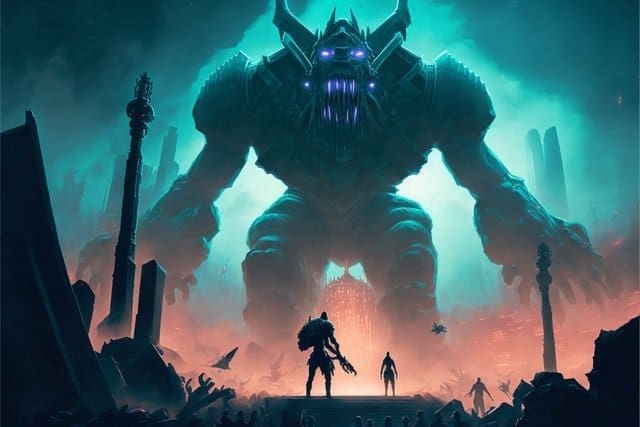
Let’s take a closer look at Arena of Valor’s effect on the global digital world. Mobile competitive gaming has changed dramatically. This multiplayer online battle arena breaks records and redefines mobile esports possibilities.
Cross-platform Integration
Arena of Valor expands possibilities by offering gameplay on Android, iOS, and Nintendo Switch platforms. The game’s sophisticated cross-play features let players team up with friends whatever platform they choose. This integration builds a unified global community. The Nintendo Switch version keeps separate progression.
The sort of thing I love about this game’s development is how TiMi Studios crafts unique experiences for different markets. The game grew from its original release in Taiwan and expanded to multiple regions. Each region now has dedicated servers and optimized experiences.
Regional Adaptations
Arena of Valor stands out because it knows how to adapt to different markets. The game has built a strong regional presence through various publishers:
- Garena managing Taiwan, Thailand, and Vietnam
- Level Infinite handling European markets
- TiMi Studio Group overseeing multiple regions
- DeNA operating in Japan
These regional adaptations have paid off, especially when you have Garena regions. The game achieved great success in Vietnam, Thailand, and Taiwan while keeping stable player bases in other markets.
Competitive Mobile Esports
Arena of Valor’s competitive scene has reached new heights. The Arena of Valor Premier League 2024 achieved impressive viewership numbers, peaking at 713,000 concurrent viewers. The tournament’s success shows in its prize pools, with totals reaching USD 18.00 970 488 across all competitions.
The game’s professional esports scene keeps growing through dedicated regional leagues:
- Garena Challenger Series Pro League (GCS) in Taiwan
- Realm of Valor Pro League (RPL) in Thailand
- Arena of Glory (AOG) in Vietnam
- Arena of Valor Star League (ASL) in Indonesia
The first Arena of Valor International Championship (AIC) made history by attracting more than 36,000,000 online viewers. This set new records for mobile gaming esports. Teams competed for substantial prize pools up to USD 500,000 in major tournaments.
The competitive scene thrives with active teams like Bacon Time (305 matches), Buriram United Esports (292 matches), and Team Flash (291 matches) leading professional play. These numbers prove Arena of Valor’s esports ecosystem’s strength and stability.
The game’s achievements include its role in major sporting events. Arena of Valor featured as an esports title at the 2018 Asian Games, 2019 Southeast Asian Games, and 2021 Asian Indoor and Martial Arts Games. This cements its position as a legitimate competitive platform in global sports.
Conclusion
MOBA games have evolved dramatically since their early days as custom game modes. Looking at these groundbreaking titles shows how each game brought state-of-the-art features to the genre and stayed loyal to its strategic roots.
Heroes of the Storm changed everything we knew about resource management and team dynamics on PC. SMITE took a bold step with its third-person viewpoint. Mobile gaming caught up quickly – Mobile Legends and Arena of Valor showed that complex MOBA gameplay works perfectly on touchscreens.
These games highlight how well the genre adapts and evolves. Players can enjoy classic PC sessions or quick mobile matches in modern MOBAs. The massive player base and esports success prove that 5v5 lane-based format still captivates players worldwide.
The biggest lesson from these games is that gaming breakthroughs happen when developers build on solid foundations. Each title we looked at took familiar MOBA elements and added its unique flavor. This approach helped the genre connect with new players while keeping the strategic depth that made it so popular.
FAQs
What is currently the top MOBA game?
- League of Legends holds the title for the best MOBA game at present. It uniquely blends elements from role-playing, tower defense, and real-time strategy, setting it apart from other similar MOBA games.
Can you explain what a MOBA game is?
- MOBA, or Multiplayer Online Battle Arena, is a subgenre of real-time strategy video games. Unlike traditional RTS games, MOBA players focus on controlling a single character in one of two teams, aiming to destroy the opposing team’s main structure. They do not engage in building or unit construction. The genre combines aspects of real-time strategy, role-playing, and action games.
Which game is considered the best for 5v5 MOBA gameplay?
- Some of the top 5v5 MOBA games include Pokémon UNITE, Heroes Evolved, Awakening of Heroes: MOBA 5v5, Legend of Ace, Vainglory, Mobile Legends: Bang Bang, Onmyoji Arena, and League of Legends: Wild Rift. These games are celebrated for their strategic and action-packed gameplay.
What does the acronym MOBA stand for?
- MOBA stands for Multiplayer Online Battle Arena. This genre is sometimes also referred to as action real-time strategy, originating from user-created modifications of traditional real-time strategy games.






















